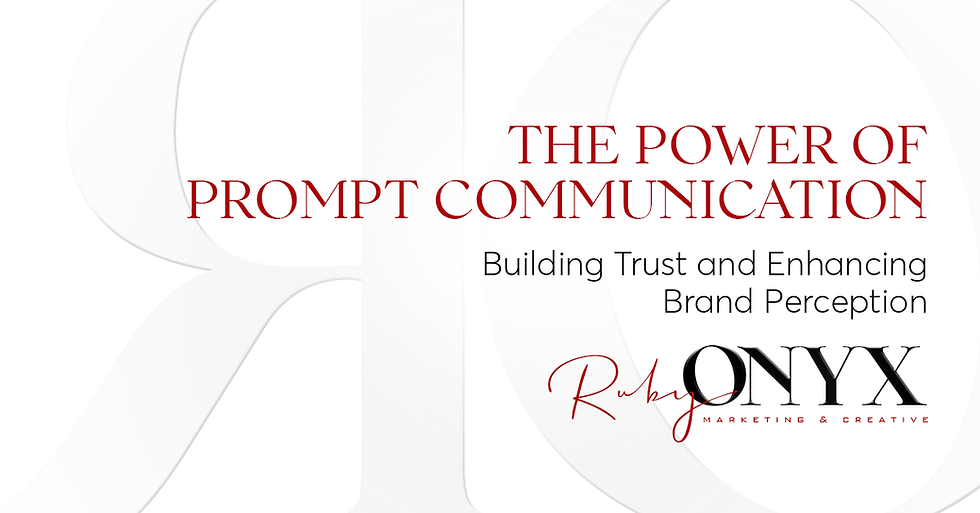Clicks and Mortar over Bricks and Mortar
- Jordie Burrell

- Apr 11, 2023
- 4 min read

In your town or city, there is a street that once was (and may even still be) the ‘main’ street of the suburb. Once upon a time it would have been the road scattered with the necessary stores and services everyone needed for the town to function. The street would feature a bakery, butcher and grocery store; probably a mechanic and a petrol station; certainly a pub, the local school and church. Scattered among these necessary services and retailers, boutique stores would find themselves in prime real estate to make money. As the saying goes . . . LOCATION, LOCATION, LOCATION. Snapping up prime real estate was vital if you wanted to succeed in business.
In the current day, while “main streets” still exist, towns have turned into cities, home to hundreds, maybe thousands of businesses. Our society has shifted from purchase decisions being made around what’s available to “what’s convenient” and the way we do businesses has altered dramatically too! We now find ourselves in a world where the location of our business no longer matters.
In 2010, fed up with her corporate job, Jane Lu took a chance and quit her career to begin a fashion empire in her garage. Her brand, Showpo, is now a global fashion destination, sold completely online. A “bricks and mortar” store in prime location played no part in the growth of her successful empire . . . so what did?
Jane was a master brand developer with a top notch website to boot. She invested her energy into building a recognisable identity for her little brand in hand with seamless user experience on her e-commerce site and it paid off.
While once upon a time we spent our time and money in the main-street of town, today, we’re online. We’ve traded ‘bricks and mortar’ for ‘clicks and mortar’. A market research study by Shopify states that the average person spends 401 minutes per day online. Approximately 4.7 billion people globally have access to the Internet. Visualise a main-street busy with 4.7 billion people for 6 and a half hours a day. Imagining this shows you that the prospect of growth is there for any online business, you just have to work out how to pique the interest of your market and convert that interest into sales.
So how do I meet my market?
Your branding needs to stand out to capture attention immediately.
You must give effort to building rapport (a relationship) with your audience
You need to master the user experience – ensure that the content you are providing and the call to action (CTA) on the website are compelling enough to keep the user on the site, or to convert them into a customer.
To achieve these things, its imperative you get to know the market you are trying to reach. This is done through research, research, research! Your branding and website need to reflect who your audience is and how they navigate the online space.
Find answers to these questions:
Who is your target audience?
What do they want/need?
How do they spend their time and money?
When and how are they likely to make purchases?
Marketing agencies know that financial resource invested into market research pays off more than $100 for every $1 invested. Researching your target audience helps you to build a brand that is recognisable and relevant to the very people you are trying to reach. Colour, wording, imagery, and product placement – it all plays a role in drawing the customer in and we find out what makes them tick by taking the time to get to know who they are. We then carry out due diligence to ensure that when they’re looking for a solution online, our brand is there to meet their desire.
Once we know our target market, though, we have to provide them with an online experience that is seamless, being careful not to add to their affliction.
Merely half a decade ago, you’d be forgiven for having a poorly designed website as the majority of business was still booming in the marketplace. However with now 75% of retail and services sold online, your website cant afford to be difficult to navigate. A recent LinkedIn study actually discovered that 88% of online consumers will not return to a website to make a purchase if they have a negative experience.
This is where user experience research becomes the next important step. According to the Neilson Norman Group, the first requirements for an exemplary user experience is to meet the exact needs of the customer, without fuss or bother. Next comes the website’s simplicity and visual appeal. Make these two aspects a joy and your brand will become etched positively in the mind of your customer. . . and is more likely to result in sales and engagement.
Jeff Bezos, CEO of Amazon has been noted as saying:
“Proactively delighted customers earn trust which earns more business, even in new business arenas. Take a long-term view (take the time to build your brand around your audience) and the interests of your customers and shareholders will align”.
This is from a man whose company holds almost 50% of the e-commerce market!
So be encouraged, and don’t be afraid to take your time in investing into your brand and your website. For every dollar invested into optimising a website, research shows a business will make $2-$100.
If you’d like to know more about how RubyOnyx can help your brand make an impact online, contact us at www.rubyonyx.com.au/contact.rubyonyx




Comments